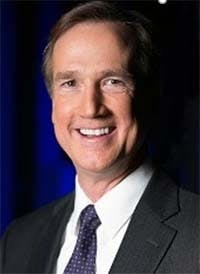Roundtable: Keys to Success in 2018 for Wholesale Data Centers
Today we continue our Data Center Executive Roundtable, a quarterly feature showcasing the insights of thought leaders on the state of the data center industry, and where it is headed. In today’s discussion, our panel of experienced data center executives – Aligned Energy CEO Andrew Schaap, Digital Realty CTO Chris Sharp, RagingWire Data Centers Vice President of Marketing James Leach, and Chris Bair, Vice President of Sales and Marketing for Iron Mountain Data Centers – discuss the key trends and issues impacting the wholesale data center sector.
The conversation is moderated by Rich Miller, the founder and editor of Data Center Frontier.
Data Center Frontier: 2017 has been an interesting year for wholesale data center providers. Some have focused on winning huge hyperscale deals, others on expanding into colocation and interconnection, or targeting key industry verticals. How do you see the landscape for wholesale providers evolving in 2018, and what do you see as the keys to success?
CHRIS SHARP, Digital Realty
Chris Sharp: You can’t solve the complete architecture for a customer with one product. What we’ve had to date is data center providers pushing colocation because that’s what they had, or scale because they had that – that’s over. Also, you can’t just wake up one day and do hyperscale, especially hyperscale with interconnectivity. If you don’t have the expertise – deep expertise in each of those respective areas – you’re going to fail.
All customers have a multi-tiered architecture. You solve part of it with colo and another part of it with scale, and you just can’t ignore the economics associated with that, nor the fundamental underpinnings of the product. Because at the top of that pyramid is their network nodes ,which are drastically needing these interconnections products: cross connect, metro connect, internet exchange. And then at the bottom of that scale is a larger farm of infrastructure that needs to be need efficient – and I mean energy efficient, where you can hit the right PUE utilization level for a larger, multi-megawatt footprint. Being able to marry those two together is critical.[clickToTweet tweet=”Digital Realty CTO Chris Sharp: You can’t solve the complete architecture for a customer with one product. ” quote=”Digital Realty CTO Chris Sharp: You can’t solve the complete architecture for a customer with one product. “]
The real differentiator, though, is hyperscale, and that’s the hard one to hit. The density of the ecosystems required and the sheer size required is immense. You could fit two aircraft carriers in our Building L in Ashburn, Virginia. That’s hyperscale. Right? But, you can also get colo and our full interconnection product in that same environment, and that approach – fully distributed and available on a global basis – is what’s really required to excel in this market.
JAMES LEACH, RagingWire Data Centers
James Leach: For wholesale data centers, we are seeing new hybrid resiliency models emerge.
In the past, resiliency designs for wholesale data centers were based on a “more for less” approach. Wholesale buyers got more space, power, telecommunications, security, etc. than they could build themselves and at lower prices. Now wholesale requirements for resiliency are changing to a “less for ‘even more’ less” approach without sacrificing overall availability. How is this happening?
Wholesale data center providers are increasingly being asked to deliver just what is needed, without a lot of backup. In the industry, this approach is known as the “N Model” where “N” is the amount of equipment needed to deliver a service.
What happens if “N” breaks? In the old days, we would deploy “N+1” or “N+2” or “2N” to prevent downtime. Now resiliency is being built into the computing systems and the application itself. It’s a multi-layered approach where the apps, systems, and data centers are designed to absorb failures instead of avoid them.
ANDREW SCHAAP, CEO of Aligned Energy
Andrew Schaap: There was a tremendous amount of M&A activity in 2017, and this will continue to rise in 2018. As a result of the M&A landscape, multiple providers are becoming the norm.
The data center providers who can be flexible in keys areas like ramp speed and floor space design will be better situated to accommodate growing business needs, or the consolidation needs of these newly-created companies.
This type of environment works to the benefit of solution providers like Aligned Energy.
CHRIS BAIR, Iron Mountain
Chris Bair: Our belief is that strong systems and the ability to deliver inventory that meet the operational and financial demands of retail colocation, wholesale and hyperscale providers is critical.
Iron Mountain is fortunate to have a huge customer base (230,000 customers in 52 countries). We want to be able to meet their needs wherever they fall on the spectrum with the level of reliability and security they expect from Iron Mountain.
NEXT: What will be the hot data center markets in 2018?
Keep pace with the fact-moving world of data centers and cloud computing by following us on Twitter and Facebook, connecting with me on LinkedIn, and signing up for our weekly newspaper using the form below:
About the Author







